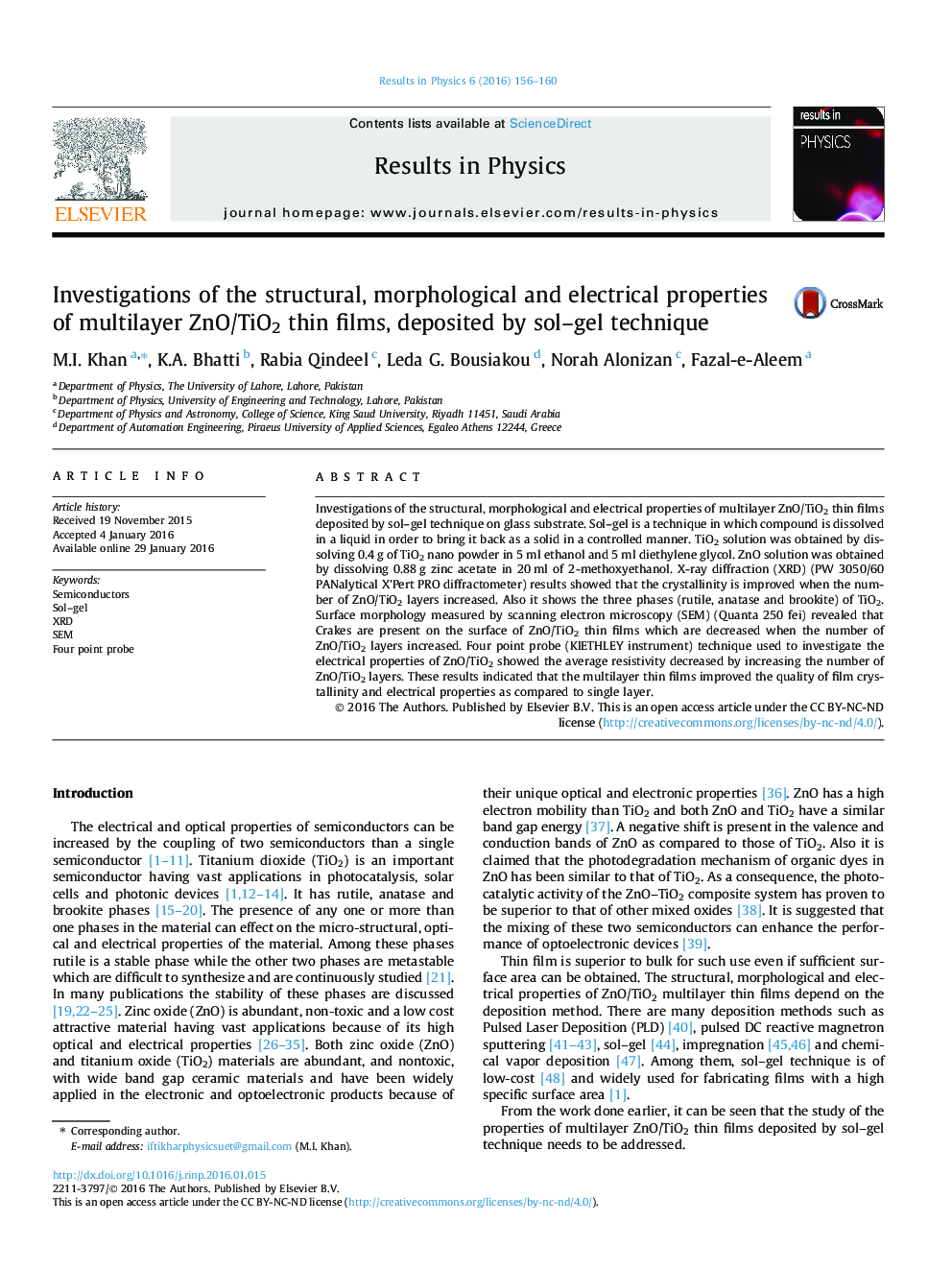| Article ID | Journal | Published Year | Pages | File Type |
|---|---|---|---|---|
| 1875469 | Results in Physics | 2016 | 5 Pages |
•Multilayer thin films of ZnO/TiO2 have been deposited on glass substrate by sol–gel.•The crystallinity and electrical properties of the films have been improved when the number of layers increases.•The roughness of the films decreases by the increasing the number of layers.
Investigations of the structural, morphological and electrical properties of multilayer ZnO/TiO2 thin films deposited by sol–gel technique on glass substrate. Sol–gel is a technique in which compound is dissolved in a liquid in order to bring it back as a solid in a controlled manner. TiO2 solution was obtained by dissolving 0.4 g of TiO2 nano powder in 5 ml ethanol and 5 ml diethylene glycol. ZnO solution was obtained by dissolving 0.88 g zinc acetate in 20 ml of 2-methoxyethanol. X-ray diffraction (XRD) (PW 3050/60 PANalytical X’Pert PRO diffractometer) results showed that the crystallinity is improved when the number of ZnO/TiO2 layers increased. Also it shows the three phases (rutile, anatase and brookite) of TiO2. Surface morphology measured by scanning electron microscopy (SEM) (Quanta 250 fei) revealed that Crakes are present on the surface of ZnO/TiO2 thin films which are decreased when the number of ZnO/TiO2 layers increased. Four point probe (KIETHLEY instrument) technique used to investigate the electrical properties of ZnO/TiO2 showed the average resistivity decreased by increasing the number of ZnO/TiO2 layers. These results indicated that the multilayer thin films improved the quality of film crystallinity and electrical properties as compared to single layer.
